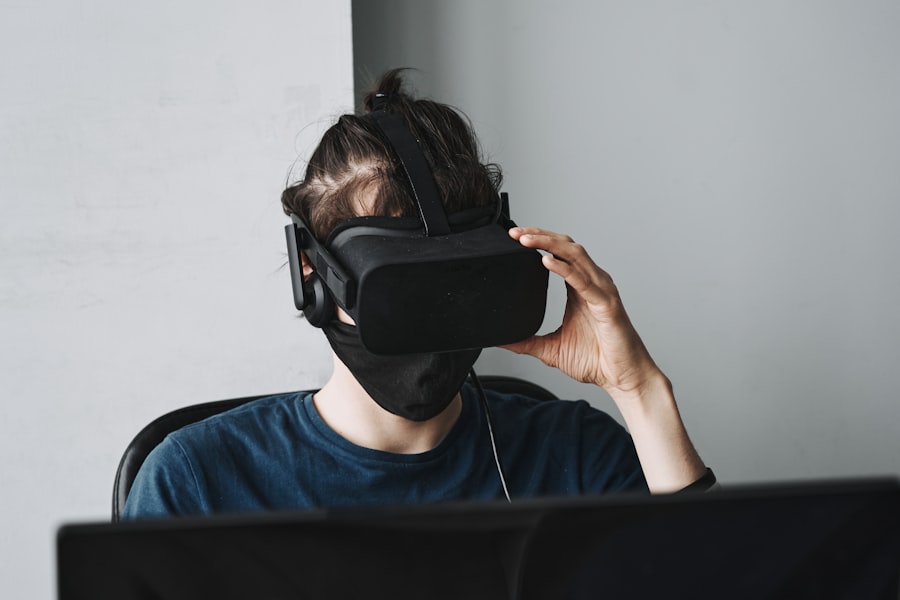Download links
How to install Exploring the Virtual Life: A New Frontier APK?
1. Tap the downloaded Exploring the Virtual Life: A New Frontier APK file.
2. Touch install.
3. Follow the steps on the screen.
Description
The concept of virtual reality (VR) has evolved dramatically since its inception, transitioning from a niche technological curiosity to a mainstream phenomenon that permeates various aspects of daily life. Initially, VR was primarily associated with gaming and entertainment, captivating audiences with immersive experiences that transported users into fantastical realms. However, as technology has advanced, the applications of virtual reality have expanded significantly, encompassing fields such as education, healthcare, and social interaction.
This evolution has been fueled by the development of more sophisticated hardware and software, making VR experiences more accessible and engaging for a broader audience. The rise of virtual reality can be attributed to several key factors, including advancements in graphics processing, the proliferation of affordable VR headsets, and the increasing demand for immersive experiences in a digital age. Companies like Oculus, HTC, and Sony have played pivotal roles in this transformation, creating devices that offer high-quality visuals and intuitive controls.
Furthermore, the COVID-19 pandemic accelerated the adoption of virtual reality as people sought new ways to connect and engage while adhering to social distancing measures.
Key Takeaways
- Virtual reality is becoming increasingly popular, offering users a new way to experience and interact with digital environments.
- When exploring virtual environments, it’s important to take breaks and be mindful of potential motion sickness or disorientation.
- Virtual reality is changing the way we socialize, work, and entertain ourselves, blurring the lines between the physical and digital worlds.
- While virtual reality can have positive effects on mental health, such as reducing anxiety, it also poses risks such as addiction and dissociation from reality.
- The future of virtual reality holds endless possibilities, from revolutionizing education and healthcare to creating entirely new forms of art and entertainment.
- Ethical considerations in virtual reality include issues of privacy, consent, and the potential for desensitization to violence and other harmful behaviors.
Navigating the Virtual World: Tips for Exploring Virtual Environments
Mastering the Controls
One of the first tips for navigating virtual worlds is to familiarize oneself with the controls and interface of the VR system being used. Each platform may have unique features and functionalities, so taking the time to understand how to move, interact, and communicate within the environment can significantly enhance the experience.
While immersed in a virtual world, it is easy to lose track of real-world boundaries, which can lead to accidents or discomfort. Users should ensure they have a clear play area free from obstacles and hazards.
Avoiding Fatigue and Motion Sickness
Additionally, taking regular breaks is essential to prevent fatigue or motion sickness, which can occur during extended VR sessions. By pacing oneself and being aware of both the virtual and physical environments, users can enjoy a more fulfilling and safe exploration of virtual life.
The Impact of Virtual Life on Society: How Virtual Reality is Changing the Way We Live

The integration of virtual reality into everyday life has profound implications for society as a whole. One significant impact is the transformation of social interactions. Virtual reality platforms allow individuals to connect with others across the globe in ways that were previously unimaginable. Social VR applications enable users to meet in shared virtual spaces, attend events, or collaborate on projects regardless of geographical barriers.
This shift has fostered a sense of community among users who may feel isolated in their physical lives, providing them with opportunities for meaningful connections. Moreover, virtual reality is reshaping industries by offering innovative solutions that enhance productivity and creativity. In education, for instance, VR can create immersive learning experiences that engage students in ways traditional methods cannot.
Imagine a history class where students can virtually visit ancient civilizations or a biology lesson that allows them to explore the human body from within. Such experiences not only make learning more interactive but also cater to various learning styles, potentially improving educational outcomes. Similarly, in fields like architecture and design, VR enables professionals to visualize projects in three dimensions before they are built, streamlining workflows and reducing costs.
Virtual Reality and Mental Health: Exploring the Benefits and Risks
| Benefits of Virtual Reality in Mental Health | Risks of Virtual Reality in Mental Health |
|---|---|
| Exposure therapy for phobias and PTSD | Potential for increased anxiety or disorientation |
| Pain distraction and management | Potential for addiction or dependence |
| Stress reduction and relaxation | Potential for triggering motion sickness |
| Enhanced social skills and empathy | Potential for negative impact on real-world social interactions |
The intersection of virtual reality and mental health is an area of growing interest among researchers and practitioners alike. On one hand, VR has shown promise as a therapeutic tool for various mental health conditions. For example, exposure therapy—a common treatment for phobias and post-traumatic stress disorder (PTSD)—can be enhanced through VR by allowing patients to confront their fears in a controlled environment.
This method provides a safe space for individuals to process their emotions while gradually desensitizing them to anxiety-inducing stimuli. However, while the potential benefits are significant, there are also risks associated with the use of virtual reality in mental health contexts. One concern is the possibility of users becoming overly reliant on virtual environments as an escape from reality.
This detachment can exacerbate existing issues or lead to new ones if individuals begin to prefer their virtual lives over real-world interactions. Additionally, not all users may respond positively to VR experiences; some may experience heightened anxiety or discomfort during immersive sessions. Therefore, it is crucial for mental health professionals to approach VR interventions with caution and ensure they are tailored to individual needs.
The Future of Virtual Life: Predictions and Possibilities
As technology continues to advance at an unprecedented pace, the future of virtual life holds exciting possibilities that could further transform how we interact with digital environments. One prediction is the emergence of more sophisticated social VR platforms that integrate artificial intelligence (AI) to create personalized experiences. These platforms could analyze user behavior and preferences to tailor interactions, making virtual gatherings feel even more authentic and engaging.
Imagine attending a concert where AI-generated avatars respond dynamically to audience reactions or participating in collaborative projects where virtual assistants help streamline workflows. Moreover, advancements in haptic feedback technology could revolutionize how users experience virtual environments by providing tactile sensations that mimic real-world interactions. This development would enhance immersion significantly, allowing users to feel textures or vibrations as they interact with virtual objects.
Such innovations could have far-reaching implications not only for gaming but also for training simulations in fields like medicine or aviation, where realistic practice scenarios are crucial for skill development.
Ethical Considerations in the Virtual World: Examining the Moral Implications of Virtual Reality

Privacy and Data Protection
One major concern is privacy, as users engage in virtual environments, they often share personal data that can be exploited if not adequately protected. Companies developing VR platforms must prioritize user privacy by implementing robust security measures and transparent data policies.
Consent, Autonomy, and Addiction
The potential for surveillance within these spaces also raises questions about consent and autonomy—users should have control over their data and how it is used. Another ethical consideration involves the potential for addiction and escapism associated with immersive technologies. As individuals become more engrossed in virtual worlds, there is a risk that they may neglect their real-life responsibilities or relationships.
Responsible Usage and Ethical Standards
This phenomenon necessitates a dialogue about responsible usage and the importance of maintaining a balance between virtual engagement and real-world interactions. Developers and policymakers must work together to create guidelines that promote healthy usage patterns while still allowing users to enjoy the benefits of virtual reality. In conclusion, as we navigate this rapidly evolving landscape of virtual life, it is essential to remain vigilant about its implications on society, mental health, and ethical standards. The potential for positive change is immense; however, it must be approached thoughtfully to ensure that we harness the power of virtual reality responsibly and equitably.
FAQs
What is virtual life?
Virtual life refers to the experience of living and interacting in a digital or virtual environment, often through the use of technology such as virtual reality, augmented reality, or online platforms.
What are some examples of virtual life?
Examples of virtual life include virtual reality games and simulations, social media platforms, online communities, and virtual worlds such as Second Life and The Sims.
How does virtual life differ from real life?
Virtual life differs from real life in that it takes place in a digital or simulated environment, and the interactions and experiences are mediated by technology. While virtual life can offer a sense of escapism and creativity, it may not always accurately reflect the complexities and nuances of real life.
What are the benefits of virtual life?
Some potential benefits of virtual life include opportunities for creativity and self-expression, the ability to connect with others from around the world, and the potential for immersive and engaging experiences.
What are the potential drawbacks of virtual life?
Drawbacks of virtual life may include issues related to privacy and security, the potential for addiction or over-reliance on technology, and the risk of disconnecting from real-life relationships and experiences.
How is virtual life impacting society?
Virtual life is impacting society in various ways, including influencing how people socialize, work, and entertain themselves. It has also raised questions about the boundaries between the digital and physical worlds, and the potential implications for mental health and well-being.





